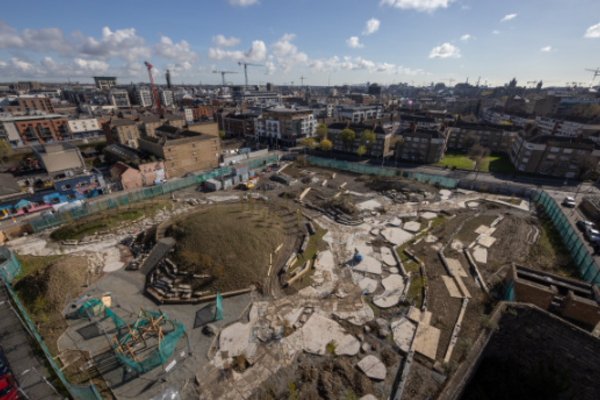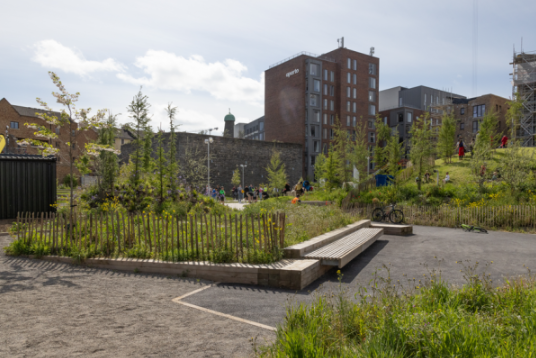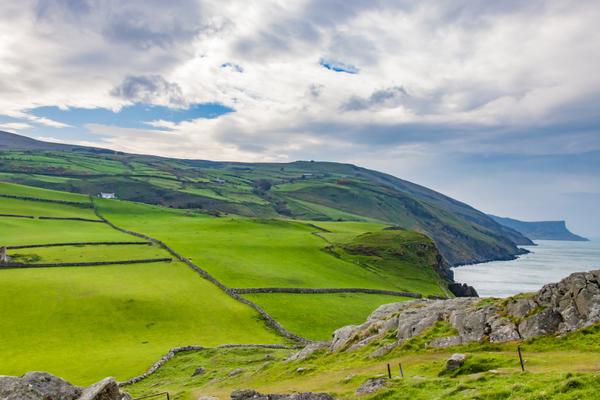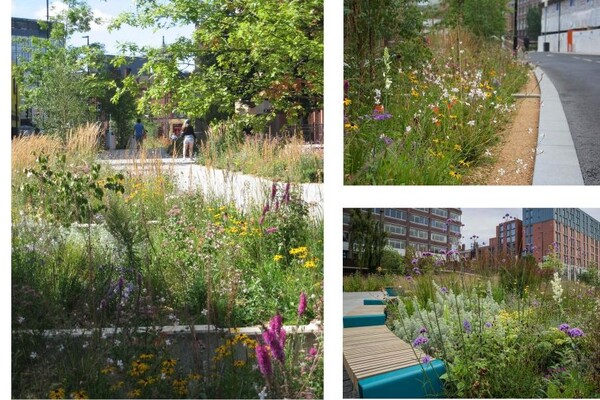IFLA Europe Exhibition 'Reconsidering Nature' - project 'Bridgefoot Street Park' by Dermot Foley Landscape Architects from the Irish Landscape Institute, Ireland
The Exhibition is a joint effort of our members - National Associations of landscape architect(ure) - who submitted their best landscape architecture projects and the 'Exhibition Project' Working Group led by our past Secretary General Urszula Forczek-Brataniec SAK Poland and members: Eva Jenikova, CAKA Czech Republic, Ana Levonmaa, MARK Finland, Almut Jirku, bdla Germany. The Exhibition project would not have been possible without the support team: Katarzyna Jamioł, Tomasz Jaróag, Natalia Nowak @Politechnika Krakowska and the graduating graphic design team: Marta Gotfryd, Natalia Kubiela, Filip Bruchnalski @Akademia Sztuk Pięknych im. Jana Matejki w Krakowie.
The aim of the exhibition is to show the contemporary role of landscape architects in creating space. Its conventionally perceived task - to create and preserve beauty in the surrounding of human habitations - has expanded considerably. Environmental challenges, climate change and the living conditions of the inhabitants of larger and larger cities oblige us to take nature beyond the emphasis on aesthetic perspectives. In design, planning and management of landscapes, landscape architects face a contemporary challenge: thinking of nature as a subject, understanding its principles and respecting its needs. IFLA Europe exhibition presents projects conceived and created in close connection with the nature. It includes large and small-scale implemented landscape architecture projects showing the forces of nature as well as exposing nature’s rights, role and importance. IFLA Europe exhibition presents an overview of realised landscape architecture projects from all over Europe which are realised in harmony with the nature and using nature-based solutions. Implemented projects show work of landscape architects working either individually or in multidisciplinary teams. Realised projects promote environmental as well as aesthetic value.
We present project submitted by Irish Landscape Institute entitled 'Bridgefoot Street Park'.
This new one-hectare park in Dublin’s city centre is a unique and innovative spatial composition which uses construction and demolition waste to create Ireland’s first such permanent public space. It addresses many ‘grand challenges’ in a synthesized and beautiful way, laying the foundation for aesthetic and even legislative change in Ireland. A rich community exchange took place over many years to bring the park into existence, from temporary community garden projects, to the rezoning of the site for open space in an urban district starved of opportunities for civic interaction with nature, to the construction of small but totemic components by local youth trainees. Upcycling of materials, otherwise abandoned in city depots, drives the spatial layout.
Dramatic topography helps visitors orientate in a complex urban context, layered as it has been over a thousand years. Civic cohesion and community capital have galvanized around the opening of the park and this positivity is matched by the rapid colonization of native, ruderal and garden escape species, aided by the use of crushed secondary raw material and experimental placing of subsoils or other ‘degraded’ substrates.
Authors: Dermot Foley Landscape Architects
Photo Credit: Paul Tierney
Country: Ireland











